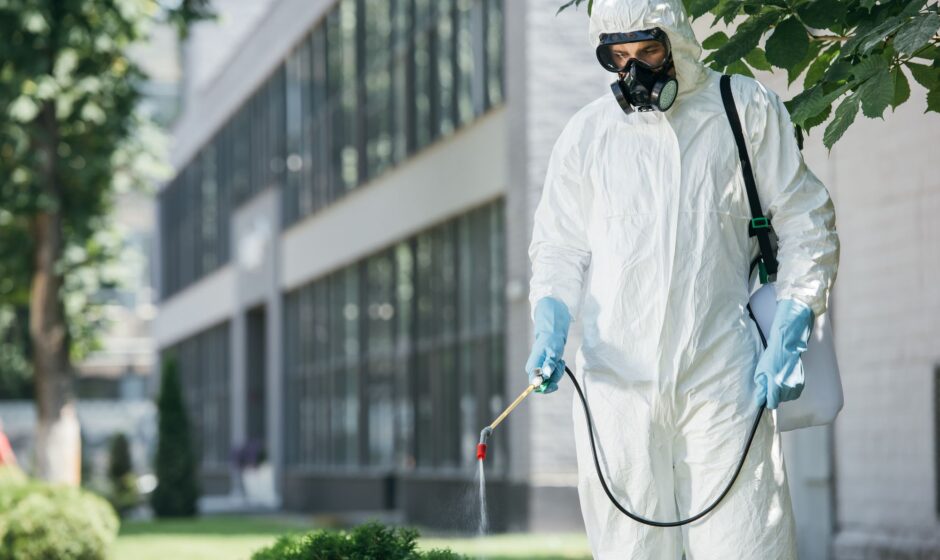Introduction To Pest Control
Pest control is an essential aspect of maintaining a clean, safe, and healthy environment, whether in residential, commercial, or industrial spaces. Pests like rodents, insects, and other unwanted creatures not only pose health risks but can also damage property, causing financial losses and inconveniences. In this guide, we will explore various types of pest control methods, the importance of pest management, and focus specifically on effective bed bug treatment as part of the broader conversation on pest eradication.
What is Pest Control?
Pest control refers to the regulation or management of species that negatively affect human activities. This practice aims to reduce or completely eliminate pests using a variety of techniques, including physical removal, chemical treatments, and biological methods. Common pests include rodents, termites, ants, cockroaches, and bed bugs, among others.
Pest control is necessary to protect:
- Human health by reducing exposure to allergens and disease-causing agents.
- Property by preventing damage caused by pests like termites or rodents.
- The environment by ensuring that infestations do not disrupt the natural balance.
Types of Pest Control Methods
There are several approaches to pest control, each suited for different types of infestations. Let’s look at some of the most effective methods.
1. Chemical Pest Control
Chemical pest control involves the use of pesticides and insecticides to kill or repel pests. These chemicals are widely used in agricultural and residential settings. While effective, it’s important to use them judiciously to avoid environmental harm and ensure the safety of non-target species, including humans.
There are two main categories of chemical pest control:
- Insecticides: Used to target insects like mosquitoes, ants, and cockroaches.
- Rodenticides: Designed to control rodents like mice and rats.
2. Biological Pest Control
Biological pest control involves using natural predators or pathogens to manage pest populations. This method is often considered eco-friendly, as it reduces the need for chemicals. Examples include:
- Ladybugs: Used to control aphid populations in gardens.
- Nematodes: Microscopic worms that can kill termites.
3. Physical Pest Control
Physical pest control relies on methods like traps, barriers, or manual removal to manage pest populations. This is often used for rodents, birds, and larger pests. Examples include:
- Rat traps: Effective for capturing and killing rodents.
- Sticky traps: Used for small insects like flies and roaches.
4. Integrated Pest Management (IPM)
IPM is a holistic approach that combines various methods—chemical, biological, and physical—to manage pests in the most efficient and environmentally responsible way. The goal is not to eliminate all pests, but to reduce their numbers to acceptable levels while minimizing risks to humans and the environment.
Common Household Pests
Every home is vulnerable to a variety of pests. Some are mere nuisances, while others can be dangerous. Here are some of the most common pests that homeowners deal with:
- Termites: These wood-destroying insects can cause significant structural damage.
- Cockroaches: Known for spreading diseases, they thrive in unsanitary conditions.
- Rodents: Mice and rats can chew through wires and spread diseases like hantavirus.
- Ants: Ants can invade homes in large numbers and contaminate food.
- Bed Bugs: Tiny and hard to spot, bed bugs are notorious for infesting bedding and causing itchy bites.
Among these, bed bug treatment requires a more targeted approach due to the unique nature of bed bugs and their resilience.
Bed Bug Treatment: The Silent Invaders
Bed bugs are one of the most troublesome pests to eradicate. They are small, reddish-brown insects that feed on human blood, typically at night. Unlike other pests, bed bugs do not transmit diseases, but their bites can cause itchy welts and allergic reactions. More importantly, their presence can cause psychological stress due to sleeplessness and discomfort.
Identifying Bed Bugs
Before jumping into bed bug treatment, proper identification is key. Bed bugs are:
- About the size of an apple seed (5-7 mm).
- Flat and oval in shape.
- Reddish-brown in color.
- Nocturnal, meaning they are most active at night.
Signs of a bed bug infestation include:
- Bites: Small, itchy red welts on the skin, often found in a line or cluster.
- Blood stains: Small, rust-colored stains on sheets or mattresses.
- Fecal spots: Black or brown spots found near bed seams or on bedding.
- Shed skins: Bed bugs shed their skin as they grow, leaving behind transparent shells.
Effective Bed Bug Treatment
Dealing with bed bugs requires a multi-step process and can involve both DIY methods and professional intervention. Here are some of the most effective approaches to bed bug treatment.
1. Heat Treatment
Bed bugs cannot withstand high temperatures, making heat treatment one of the most effective methods. This process involves heating the infested area to a temperature of around 120°F (49°C), which kills bed bugs at all life stages. Professional exterminators typically use specialized equipment to carry out heat treatments.
2. Chemical Treatment
Insecticides formulated specifically for bed bugs are widely used in bed bug treatment. These products come in various forms, such as sprays, dusts, and foggers. Some of the most effective chemicals include:
- Pyrethroids: Synthetic chemicals that affect the nervous system of bed bugs.
- Desiccants: Substances that dry out bed bugs by damaging their protective outer layer.
While chemical treatments can be effective, they may need to be repeated multiple times to ensure the complete eradication of the bed bugs.
3. Vacuuming
Vacuuming is an essential part of bed bug treatment. Regularly vacuuming mattresses, carpets, and furniture can remove bed bugs and their eggs. However, it is important to immediately dispose of the vacuum bag in a sealed plastic bag to prevent the bugs from escaping.
4. Mattress Encasements
Special mattress covers or encasements can be used to trap bed bugs inside, preventing them from feeding and eventually killing them. These encasements also protect the mattress from future infestations.
5. Steam Treatment
Steam is another natural way to kill bed bugs, as they cannot survive high temperatures. A steamer can be used on mattresses, bedding, curtains, and furniture. However, the steam must be applied correctly to ensure it reaches all hiding spots.
6. Professional Pest Control Services
In severe infestations, it is often necessary to hire professional pest control services. Pest control professionals are equipped with specialized tools and chemicals that are not available to the general public. They can assess the level of infestation and recommend the most effective bed bug treatment plan.
Preventing Bed Bug Infestations
Prevention is always better than treatment. Here are some tips to prevent bed bugs from invading your home:
- Regular Inspections: Check your bed, furniture, and luggage for signs of bed bugs, especially after traveling.
- Reduce Clutter: Bed bugs love hiding in clutter, so keep your living space tidy and organized.
- Seal Cracks: Repair cracks and crevices in walls, floors, and furniture, as bed bugs can use these areas to hide.
- Use Protective Covers: Encase your mattresses and box springs in protective covers to reduce the likelihood of an infestation.
- Be Cautious with Second-hand Furniture: Bed bugs often hitchhike into homes through used furniture. Always inspect second-hand items thoroughly before bringing them into your home.
Conclusion
Pest control is an integral part of maintaining a clean and safe environment, whether you’re dealing with common pests like ants and cockroaches or more resilient invaders like bed bugs. Among the various pests, bed bug treatment stands out as particularly challenging due to the pest’s ability to hide and reproduce rapidly. Effective bed bug treatment involves a combination of heat, chemical treatments, vacuuming, and professional pest control services, along with preventive measures to avoid future infestations.
Pest control is not just about eliminating nuisances; it’s about protecting health, property, and peace of mind. Whether you’re facing a current pest problem or taking preventive measures, understanding the various methods and treatments available will help you maintain a pest-free environment.




